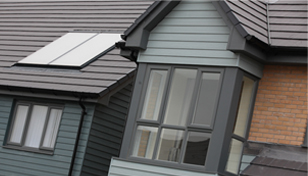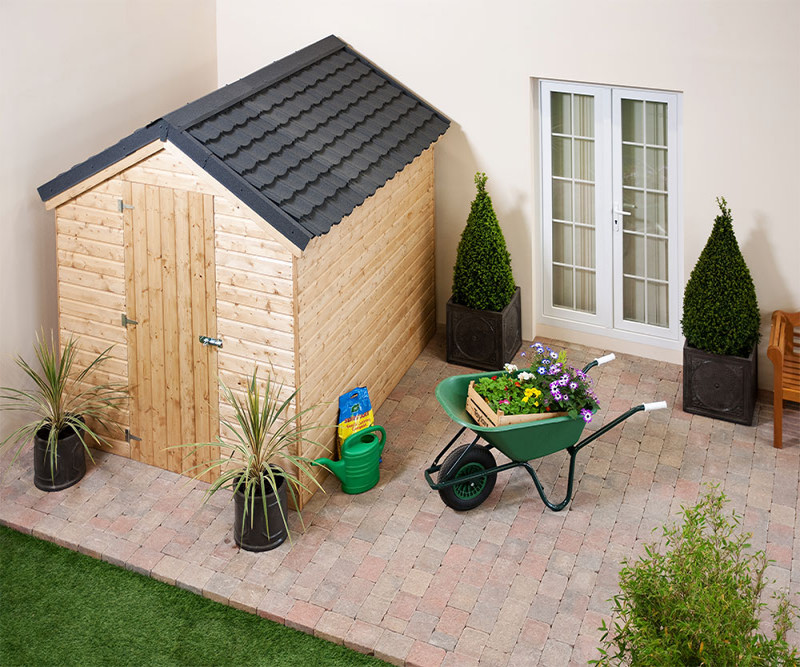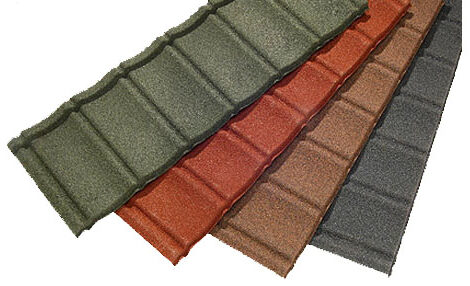A low-pitched roof has many unique benefits and can be ideal for those wanting something unique. If you’ve chosen to apply a low-pitched roof to your property, check out this guide for more information to help you understand low-pitched roofing.
Table of contents:
What is a low-pitched roof?
Unlike pitched roofs, the low-pitched roof is designed with a pitch between 10° and 35°. Anything below the 10° marker is considered a flat roof.
Low-pitched roofs are usually applied to extensions or similar builds. This is because they’re more appealing and less awkward-looking design-wise. It also helps save on costs and doesn’t risk blocking the views from windows installed in buildings next door.
Looking for more information? Read our pitched roofing buyer’s guide.
Types of material for a low-pitch roof
For a low-pitch roof, not all materials can be used and as such you will need to consider alternatives. Each type of roofing material comes with its own benefits. Choosing the right type will depend on what you desire in the function of the material and your overall budget. Here’s an overview of the different types you can find within our collection of pitched roofing.
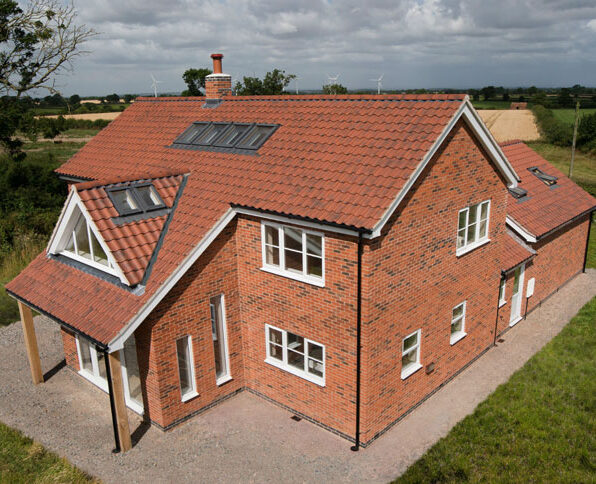 Clay
Clay
Clay tiles have been at the forefront of home roof usage for hundreds of years. They are one of the longest-lasting roofing materials available. Not only are they easy to clean, but clay roof tiles are also consistent in their colour and size. This means you can combine different types of tile to ensure that your new roof looks neat and in keeping with your home exterior theme.
Recycled slate
Using slate roof tiles can be great for those with a desire for a sleeker, longer-lasting material. There are all sorts of slate and many available within our range that are made with 100% recycled roofing materials.
Steel
Steel is a lighter-weighted material compared to clay or slate. It typically has a class A fire rating, which is great for use in properties where large numbers of people may reside regularly.
With steel tiles you can also save more energy, meaning a warmer home and little need to worry about the need for additional insulation.
Polypropylene
Also known as lightweight roof tiles, these tiles are exactly as described – lightweight. This allows for many other different benefits to arise as a result.
Not only does their lightweight material allow for quicker installation time and lower cost, but they also allow reduced carbon emissions during their transit.
What about the types of tiles?
Interlocking roof tiles are considered a popular choice when it comes to choosing a low-pitched roof design. In fact, this is a factor of why they are cost-effective as there is little need for additional material.
Having said this, there are many different tiles to choose from. As they are not designed for a strict setting, there are numerous design offers that you can apply to your new roof during the installation process.
FAQs
Single tiling vs double lap tiling
The low-pitched roof is often designed using the single lapping method as it results in a flatter surface. The traditional lapping tile method has long been a favourite, but with the desire for more affordable solutions rising it’s been slipping in popularity.
Unlike double lap tiling, single lap gives water the freedom to run off down the tiles via a simple drainage system.
What is the minimum pitch of a low roof?
This will depend typically on the type of tile and, if hired, the manufacturer’s recommendation. You can calculate the pitch using the method found in this guide.
Why does roof pitch matter?
Choosing the roof pitch during the planning phase is vital. It will determine the result of internal building space, as well as the materials used on the roof. So ensure that you have an idea of what the roof pitch will be and you can have a smoother installation process with minimal issues.
What if I want to adjust an existing roof?
If you are re-doing the roof entirely or over 25% of it, you will need planning permission. Due to the nature of the changes, the differences in the new roof could result in how it works as well as other parts of the home (resulting in cracked walls, roof collapse and more).
Can a low-pitched roof be applied on long rafters?
The short answer is yes – however! It is important to consider the roof’s location and make sure where it is placed is not at high risk of rainwater ingress. You can discuss with a manufacturer whether the tiles can be designed in a way to limit issues such as flooding without compromising on the look.
Things to consider with a low-pitched roof
Cost
Low pitched roofs will likely use less material during manufacturing and installation. As a result, tile purchases can be more affordable than standard roofing.
Installation
Using the ‘overlapping system’, can allow for some roofs to be built as low as 10°. You can also have more freedom when it comes to design and enjoy fast and effective installation because of low material usage.
Maintenance
Although maintenance is low, you will still need to make regular checks on the ground and above the roof. If you are not a DIY specialist, make sure you hire someone with the required reparation skills if you spot damages. Bad repairs can make the issue worse and will only result in more expensive repairs in the long run.
Lifespan
Not only are roof tiles available in many different materials, but some even come with specific screws or fixings to help you reduce your time spent finding these types of materials. It can also give you a lower cost as you purchase your tiles.
Many tiles from manufacturers will be available with a life of at least a few decades. This is common and many may come with longer guarantees. Keep in mind to check this with the manufacturer or check out our range of low-pitched roof tiles to see examples of potential lifespans.
Drainage
It’s important to note that gravity doesn’t play favourites and a large aspect of roofing is the drainage considerations. Appearance matters, but incorrect pitching can result in poor drainage.
If a roof structure has long rafters, large amounts of water can linger on the surface. It will find its way into gaps and damage the underlay, as well as the battens, in the long term. This issue can be dealt with by limiting the maximum rafter length.
As an added measure, increase roof pitch by 1° for every half-metre distance that a rafter length is over the recommended maximum length.
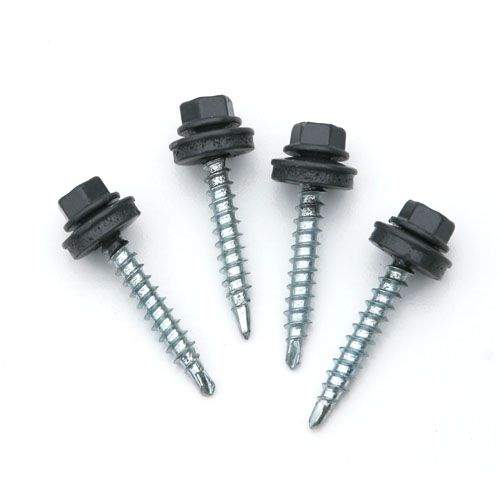
Access
Being easy to maintain, you can expect easy access as well. They are not as horizontal as flat roofing materials, but they are in fact much better to walk on if access is desired.
Additional features
Not only are roof tiles available in many different materials, but some even come with specific screws or fixings to help you reduce your time spent finding these types of materials. It can also give you a lower cost as you purchase your tiles



